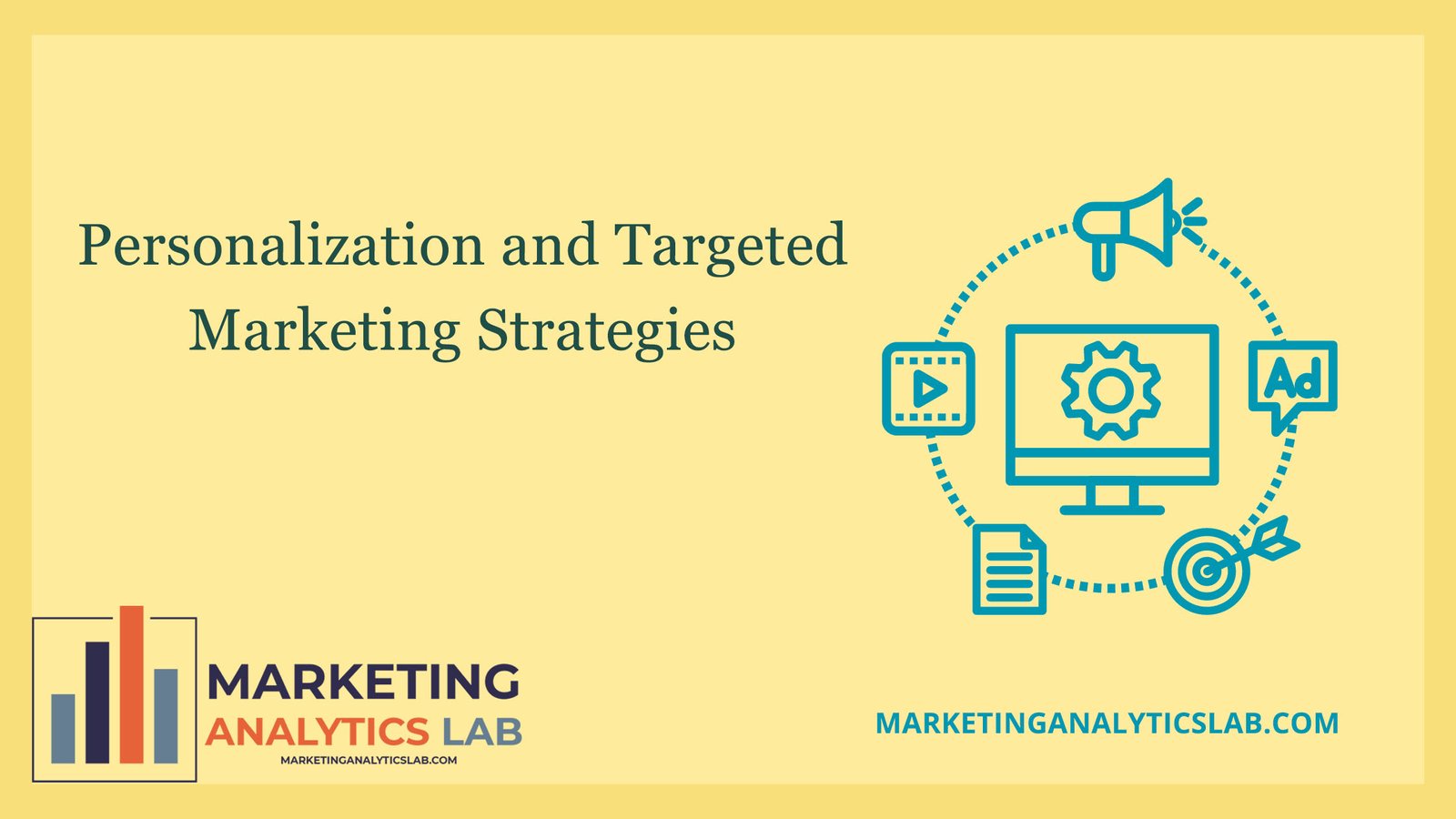Personalization and targeted marketing have become critical components of modern marketing strategies, enabling businesses to connect with customers on a more individual level and drive higher engagement, loyalty, and conversion rates. This article explores the concepts of personalization and targeted marketing, their benefits, strategies for implementation, and best practices.
Understanding Personalization and Targeted Marketing
Personalization: Personalization involves tailoring marketing messages, offers, and experiences to individual customers based on their preferences, behaviors, and interactions. It aims to make customers feel valued and understood, improving their overall experience with the brand.
Targeted Marketing: Targeted marketing focuses on reaching specific segments of the market with tailored messages and offers. Unlike broad-based marketing strategies, targeted marketing aims to address the unique needs and interests of different customer groups.
Benefits of Personalization and Targeted Marketing
- Increased Engagement:
- Relevance: Personalized messages and offers are more relevant to customers, leading to higher engagement rates.
- Interaction: Customers are more likely to interact with content and offers that align with their interests.
- Improved Customer Experience:
- Value: Personalization makes customers feel valued and understood, enhancing their overall experience.
- Satisfaction: Tailored experiences lead to higher customer satisfaction and loyalty.
- Higher Conversion Rates:
- Effectiveness: Targeted marketing campaigns are more effective at driving conversions compared to generic campaigns.
- ROI: Higher engagement and conversion rates result in better return on investment (ROI) for marketing efforts.
- Enhanced Customer Retention:
- Loyalty: Personalized interactions foster stronger customer relationships and increase loyalty.
- Retention: Retaining customers through personalized experiences reduces churn and increases lifetime value.
- Better Data Utilization:
- Insights: Personalization and targeting rely on data-driven insights, enabling more informed marketing decisions.
- Optimization: Continuous data analysis helps optimize marketing strategies and improve outcomes.
Strategies for Implementing Personalization and Targeted Marketing
- Data Collection and Analysis:
- Customer Data: Collect data from various sources, including website interactions, purchase history, social media, and customer feedback.
- Segmentation: Analyze data to segment customers based on demographics, behavior, interests, and preferences.
- Developing Customer Personas:
- Profiles: Create detailed customer personas representing different segments of your target audience.
- Needs and Goals: Identify the needs, goals, and pain points of each persona to tailor marketing messages effectively.
- Personalized Content and Messaging:
- Dynamic Content: Use dynamic content that changes based on customer preferences and behavior.
- Customized Offers: Provide personalized offers and recommendations based on past interactions and purchase history.
- Targeted Advertising:
- Ad Targeting: Use targeting options on digital advertising platforms to reach specific segments with relevant ads.
- Retargeting: Implement retargeting strategies to reach customers who have previously interacted with your brand.
- Email Marketing:
- Personalized Emails: Send personalized email content based on customer preferences, behavior, and purchase history.
- Segmentation: Segment email lists to deliver relevant content and offers to different customer groups.
- Customer Journey Mapping:
- Touchpoints: Map out the customer journey to identify key touchpoints and opportunities for personalization.
- Experience Optimization: Tailor interactions at each stage of the customer journey to enhance the overall experience.
- Leveraging AI and Machine Learning:
- Predictive Analytics: Use predictive analytics to forecast customer behavior and tailor marketing strategies accordingly.
- Recommendation Engines: Implement AI-driven recommendation engines to provide personalized product suggestions.
Best Practices for Personalization and Targeted Marketing
- Ensure Data Privacy:
- Compliance: Adhere to data privacy regulations such as GDPR and CCPA to protect customer information.
- Transparency: Be transparent with customers about how their data is used and offer opt-out options.
- Maintain Data Accuracy:
- Quality: Regularly clean and update customer data to ensure accuracy and relevance.
- Integration: Integrate data from various sources for a comprehensive view of customer behavior.
- Test and Optimize:
- A/B Testing: Conduct A/B testing to evaluate the effectiveness of different personalized approaches and messages.
- Continuous Improvement: Use data insights to continuously optimize personalization and targeting strategies.
- Personalize Responsibly:
- Relevance: Ensure that personalization efforts are relevant and add value to the customer experience.
- Avoid Overreach: Avoid excessive personalization that may invade customer privacy or come across as intrusive.
- Measure and Analyze Performance:
- Metrics: Track key metrics such as engagement rates, conversion rates, and customer satisfaction to evaluate the success of personalization efforts.
- Feedback: Gather feedback from customers to understand their preferences and improve personalization strategies.
Case Studies and Examples
- Amazon:
- Personalized Recommendations: Amazon uses data-driven algorithms to provide personalized product recommendations based on browsing history and past purchases.
- Dynamic Content: The website dynamically updates product recommendations and promotional offers for each user.
- Netflix:
- Content Suggestions: Netflix leverages user data to recommend movies and TV shows tailored to individual viewing habits.
- Personalized Experience: The platform offers a customized homepage based on user preferences and viewing history.
- Sephora:
- Customized Offers: Sephora uses customer data to send personalized offers and recommendations through email and its mobile app.
- Loyalty Programs: The brand tailors loyalty rewards and promotions based on individual purchasing behavior and preferences.
Conclusion
Personalization and targeted marketing are essential strategies for modern businesses seeking to enhance customer engagement, drive conversions, and build long-term relationships. By leveraging data-driven insights and implementing best practices, companies can deliver more relevant and meaningful experiences to their customers.
However, achieving successful personalization and targeting requires a balance between leveraging data and respecting customer privacy. By focusing on data accuracy, compliance, and continuous optimization, businesses can harness the power of personalization and targeted marketing to achieve their goals and thrive in a competitive landscape.

